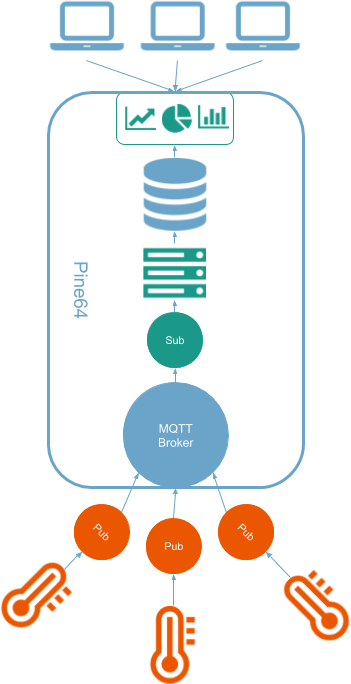Course description
 “The Internet of things (IoT) is the network of physical devices, vehicles, home appliances and other items embedded with electronics, software, sensors, actuators, and connectivity which enables these objects to connect and exchange data.” Source: wikipedia.org
“The Internet of things (IoT) is the network of physical devices, vehicles, home appliances and other items embedded with electronics, software, sensors, actuators, and connectivity which enables these objects to connect and exchange data.” Source: wikipedia.org
In recent years a flood of smart devices as come onto the market. Some of them useful while others died a quick death. With this increase security and privacy issues also became a large problem. Although the initial hype has gone down a bit, "smart" devices are here to stay and will become an ever increasing part of our lives.
This course teaches you how to build simple electronic circuits and then goes on how to program microcontrollers to read sensor data and send this on to other devices in the network or internet to be used in smart applications. In this course we will use smart farming as the use-case where sensor data can be used to inform farmers of actions to take, or automate the farm.
The course was taught in combination with St Pauls University Dumaguete and Foundation University for a DOST funded project to develop a smart aquaculture monitoring sensor platform.
Prerequisites
- Have a very basic understanding of computer programming in any language.
Without this knowledge the course can still be followed but more self study is needed. A good start is the "Introduction to Programming Using Python" on EdX
Terms to know are:- Variables (integer, string, float, array/list)
- Loops
- Functions
- Have the Arduino IDE installed, and if using the NodeMCU as assumed by the course, also it's requirements. See our wiki documentation for more information.
- The following materials:
- Arduino or NodeMCU type development board
- Breadboard
- Usb cable to connect the development board to the computer
- Some breadboard wires (you can recycle old ethernet cables and use the individual wires)
- Some led's
- A few switches
- A collection of resistors
- Some sensors (preferably I2C). There are many for sale on Adafruit, Lazada and Sparkfun. Also consider ordering through Mouser because they have free delivery after a certain minimum, and also sell components from Sparkfun and Adafruit.
- An MQTT server with NodeRED. Having a Pine64 running this works very well. See our wiki documentation on NodeRED for more info.
Goals
- Learn to build a simple electronic circuit on a breadboard
- Learn to program a microcontroller using the Arduino IDE
- Understand most common electronic interfaces
- Learn how smart devices can communicate with each other and web and mobile applications
Activities
- Workshops: 3 times 2 hours
- Time in between workshops for independent work and finish assignments